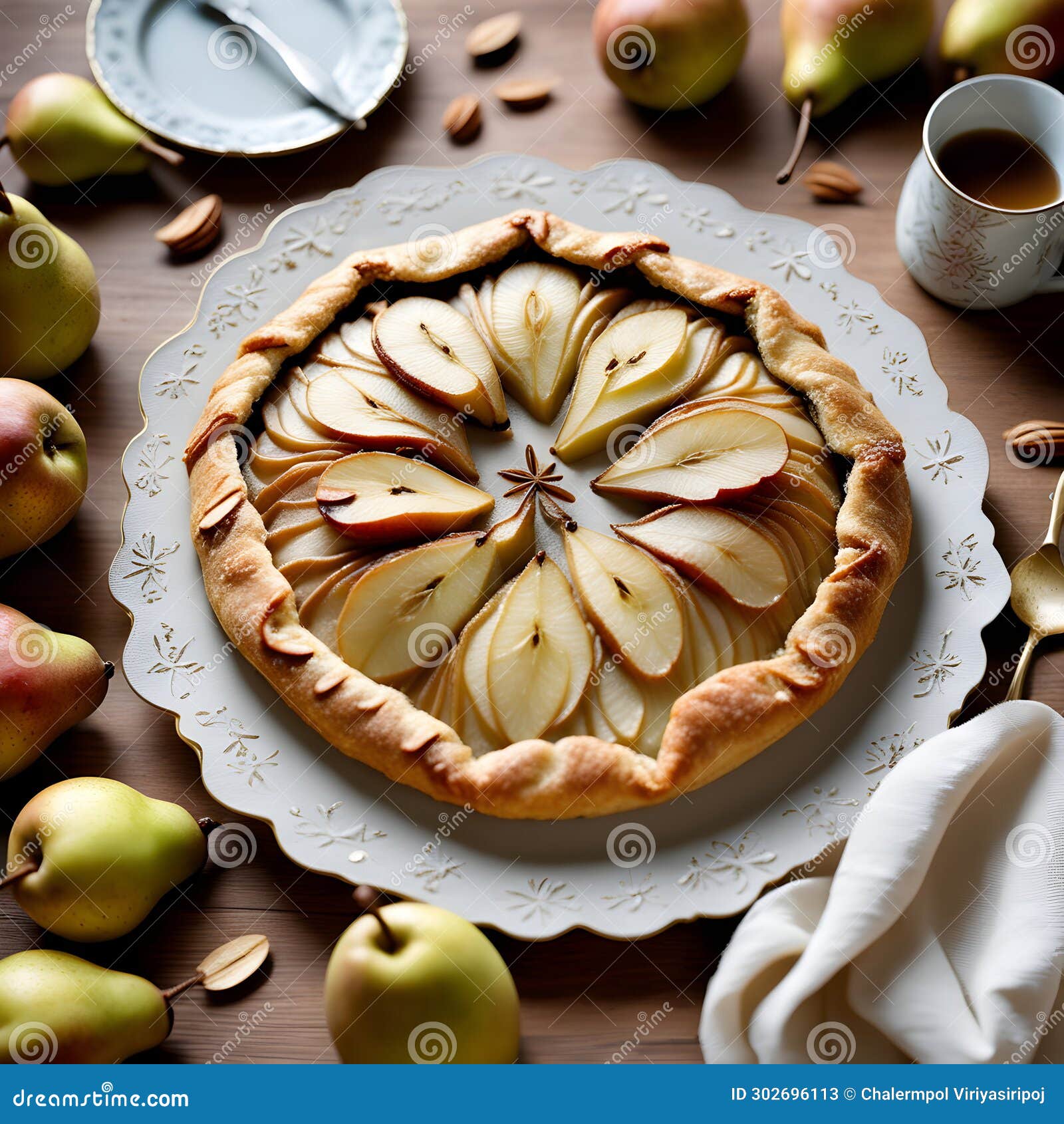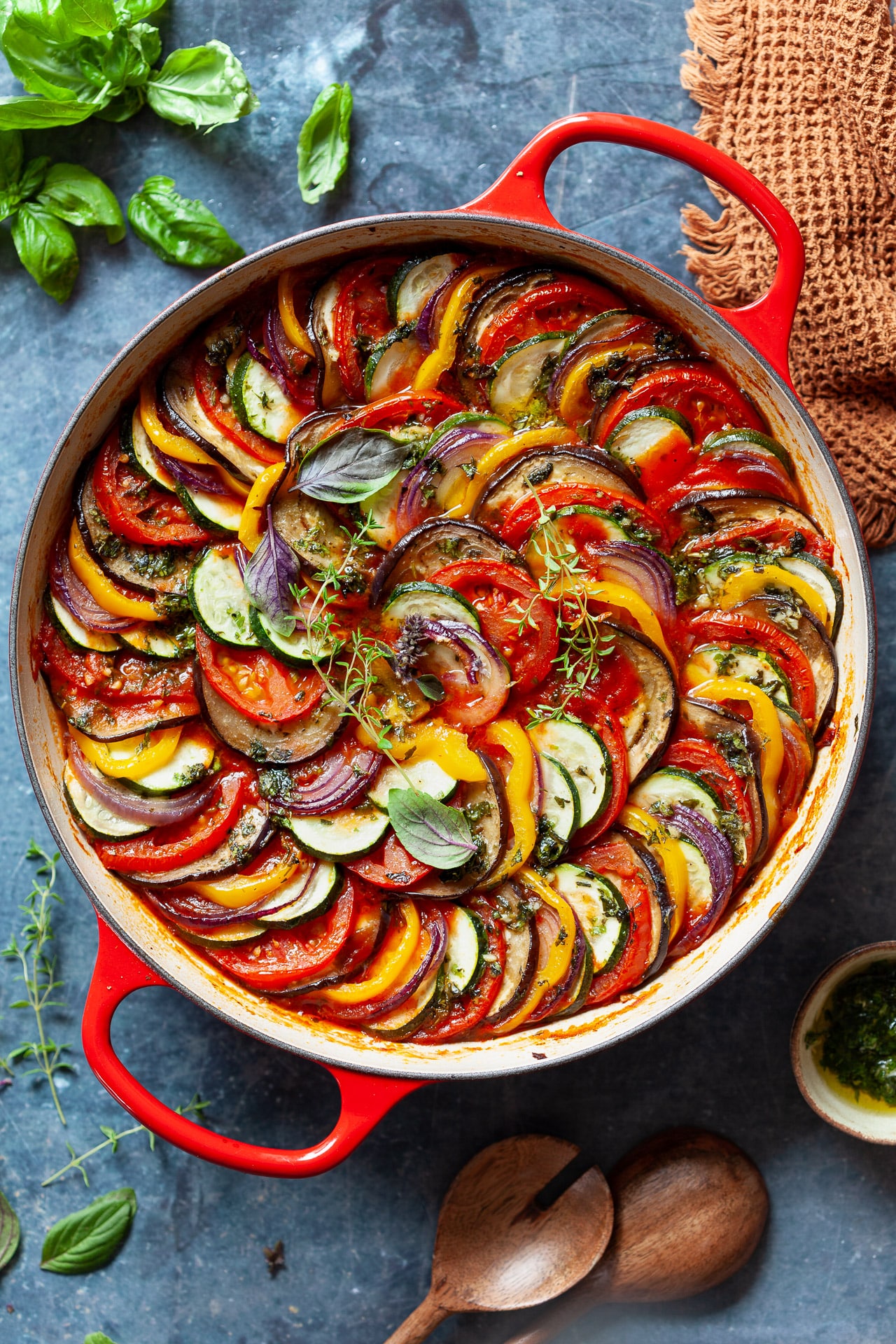The Art of the Galette: A Journey into Rustic Elegance
Related Articles
- A Journey Through Flavors: Exploring The World Of Mie Goreng
- A Slice Of Sunshine: The All-American Key Lime Pie
- A Deep Dive Into Chicken Cordon Bleu: From Classic To Creative
- Tahu Tek: A Deep Dive Into Indonesian Street Food Delights
- A Journey Through The World Of Vietnamese Pho: A Comprehensive Guide To Crafting The Perfect Bowl
Introduction
In this article, we dive into The Art of the Galette: A Journey into Rustic Elegance, giving you a full overview of what’s to come
The Art of the Galette: A Journey into Rustic Elegance

The galette, a free-form pie, is a culinary canvas waiting to be painted with flavors and textures. It’s a celebration of simplicity, showcasing the beauty of imperfection. While it may seem like a straightforward dish, the galette holds within it a rich history and a surprising depth of culinary possibilities. This article delves into the fascinating world of galettes, exploring their origins, techniques, variations, and the endless creative opportunities they offer.
A History of Humble Beginnings: From Farmhouse to Fine Dining
The galette’s roots trace back to the humble farmhouses of rural France. In these kitchens, resourceful cooks utilized readily available ingredients like seasonal fruits, vegetables, and grains to create nourishing and comforting meals. The galette, with its simple construction and lack of precise shaping, was born from necessity, a way to quickly and easily transform pantry staples into a satisfying meal.
The beauty of the galette lies in its inherent flexibility. Unlike its structured cousin, the pie, the galette embraces the imperfections of hand-crafted dough, resulting in a rustic and charming aesthetic. This inherent "rough around the edges" quality reflects the essence of French cuisine, a celebration of natural flavors and unpretentious elegance.
Mastering the Galette: A Step-by-Step Guide
While the galette may appear simple, mastering its construction requires a delicate balance of technique and intuition. Here’s a detailed guide to help you navigate the process, from dough to filling, and everything in between:
1. The Foundation: Dough
The dough is the heart and soul of any galette. It’s a canvas upon which your culinary creativity unfolds. While you can find countless galette dough recipes, the fundamental elements remain constant: flour, butter, and liquid.
Essential Dough Ingredients:
- Flour: All-purpose flour is a classic choice for galettes. It offers a balance of gluten development and tenderness.
- Butter: Cold, unsalted butter is crucial for achieving a flaky and tender crust.
- Liquid: Water, milk, or a combination of both are common liquids used in galette dough. The amount will vary depending on the flour’s hydration level.

Tips for Perfect Dough:
- Cold Ingredients: Keep your butter and liquid cold to prevent gluten development, which can lead to a tough crust.
- Gentle Handling: Avoid overworking the dough, as this can also lead to a tough texture.
- Resting Time: Allow the dough to rest in the refrigerator for at least 30 minutes before rolling. This allows the gluten to relax and the butter to firm up.
2. The Heart of the Galette: Filling
The filling is where you truly get to showcase your culinary creativity. The possibilities are endless, ranging from classic fruit fillings to savory combinations that challenge traditional expectations.
Classic Galette Fillings:
- Fruit: Apples, berries, stone fruits, and pears are all excellent choices for classic galette fillings.
- Cheese: Cheeses like Gruyere, cheddar, and goat cheese pair beautifully with savory galettes.
- Vegetables: Roasted vegetables like onions, peppers, and mushrooms add depth and richness to savory galettes.

Tips for Choosing and Preparing Fillings:
- Seasonality: Embrace seasonal ingredients for the freshest flavors.
- Flavor Balance: Consider the flavors of your chosen filling and adjust the sweetness or saltiness accordingly.
- Texture Contrast: Think about the textural elements you want to incorporate. For example, a creamy cheese filling would be balanced by a crunchy crust.
3. Building the Galette: Assembling the Masterpiece
With the dough and filling prepared, you’re ready to assemble your galette. This is where the art of the free-form pie comes into play.
Steps for Assembling:
- Roll Out the Dough: Roll the dough into a large circle, about 1/4 inch thick.
- Transfer to a Baking Sheet: Carefully transfer the dough to a parchment-lined baking sheet.
- Arrange the Filling: Place the filling in the center of the dough, leaving a border of about 2 inches.
- Fold the Edges: Fold the edges of the dough over the filling, creating a rustic, overlapping crust.
- Brush with Egg Wash: Brush the crust with an egg wash for a golden brown finish.
- Bake: Bake the galette in a preheated oven until the crust is golden brown and the filling is cooked through.
Tips for Perfect Assembly:
- Don’t Overfill: Avoid overloading the dough with filling, as this can make it difficult to fold the edges.
- Embrace Imperfection: The beauty of the galette lies in its rustic charm. Don’t strive for perfect symmetry, as this will detract from the natural beauty of the dish.
- Don’t Be Afraid to Experiment: Get creative with your folding techniques. Try different shapes and patterns to add visual interest.
Beyond the Basics: Exploring the World of Galette Variations
The beauty of the galette lies in its versatility. It’s a blank canvas for culinary creativity, allowing you to experiment with flavors, textures, and presentations. Here’s a glimpse into some of the exciting variations that go beyond the traditional:
1. Savory Galettes: A Culinary Adventure
While fruit galettes are undeniably delicious, savory galettes offer a world of culinary possibilities. Imagine a crust filled with a medley of roasted vegetables, a creamy goat cheese filling, or a hearty combination of mushrooms and bacon.
Savory Galette Ideas:
- Roasted Vegetable Galette: Combine colorful roasted vegetables like bell peppers, zucchini, and onions with a tangy goat cheese filling.
- Mushroom and Gruyere Galette: This classic combination features earthy mushrooms and nutty Gruyere cheese for a savory and satisfying meal.
- Caramelized Onion and Bacon Galette: Sweet caramelized onions and crispy bacon offer a delightful contrast in textures and flavors.
2. Beyond the Traditional Crust: Embracing New Textures
The classic galette crust is a work of art in itself, but don’t be afraid to experiment with different textures and flavors.
Alternative Crust Ideas:
- Whole Wheat Crust: For a heartier and more rustic flavor, try using whole wheat flour in your dough.
- Herbed Crust: Incorporate fresh herbs like rosemary, thyme, or oregano into your dough for an aromatic twist.
- Nut Crust: Ground almonds or pecans can be added to the dough for a nutty flavor and texture.
3. Presentation Matters: Elevating the Galette Experience
The galette, with its rustic charm, is perfect for casual gatherings and impromptu meals. However, with a little creative styling, it can also be transformed into a stunning centerpiece for a more formal occasion.
Presentation Tips:
- Garnish with Fresh Herbs: A sprinkle of fresh herbs like parsley or basil adds a touch of elegance and fragrance.
- Drizzle with Honey or Glaze: A drizzle of honey or a glaze adds sweetness and visual appeal.
- Serve with a Side Salad: A simple salad with vinaigrette dressing complements the galette perfectly.
- Create a Rustic Table Setting: Use natural elements like wood, burlap, and linen to create a warm and inviting atmosphere.
Culinary Tips: A Master Chef’s Secrets
As you embark on your galette journey, here are some tips from experienced bakers and culinary enthusiasts to help you create culinary masterpieces:
- Don’t Overwork the Dough: Overworking the dough can lead to a tough and chewy crust.
- Keep the Butter Cold: Cold butter is essential for creating a flaky and tender crust.
- Don’t Be Afraid to Experiment: The beauty of the galette lies in its versatility. Don’t be afraid to try new ingredients and flavors.
- Embrace Imperfection: The rustic charm of the galette lies in its imperfections. Don’t strive for perfect symmetry.
- Serve Warm: Galettes are best served warm, allowing the flavors to shine.
Conclusion: A Culinary Journey of Endless Possibilities
The galette, with its simplicity and versatility, offers a gateway to a world of culinary exploration. From classic fruit fillings to innovative savory combinations, the galette allows you to express your creativity and delight your taste buds. So, embrace the art of imperfection, experiment with flavors, and embark on a culinary journey of endless possibilities. The galette is more than just a recipe; it’s a celebration of rustic elegance, a testament to the beauty of simplicity, and a culinary adventure waiting to be discovered.
Closure
We hope this article has helped you understand everything about The Art of the Galette: A Journey into Rustic Elegance. Stay tuned for more updates!
Make sure to follow us for more exciting news and reviews.
Feel free to share your experience with The Art of the Galette: A Journey into Rustic Elegance in the comment section.
Keep visiting our website for the latest trends and reviews.





